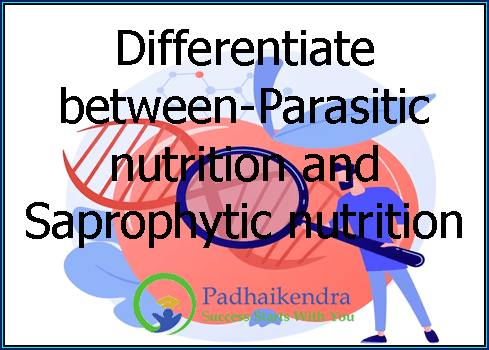Parasitic nutrition and saprophytic nutrition are two different modes of nutrition in living organisms.
Parasitic nutrition is a mode of nutrition in which an organism feeds on another living organism, known as the host. The parasite benefits from the relationship by taking nutrients and resources from the host, often causing harm or even death to the host. Examples of parasites include ticks, fleas, tapeworms, and parasitic plants.
Saprophytic nutrition, on the other hand, is a mode of nutrition in which an organism feeds on dead or decaying organic matter. These organisms, known as saprophytes, break down complex organic molecules into simpler molecules that they can use as a source of energy and nutrients. Examples of saprophytic organisms include fungi and bacteria.
In summary, parasitic nutrition involves one organism feeding on another living organism, while saprophytic nutrition involves an organism feeding on dead or decaying organic matter. Parasites harm their host in order to survive, while saprophytes play an important role in breaking down organic matter and returning nutrients to the ecosystem.





